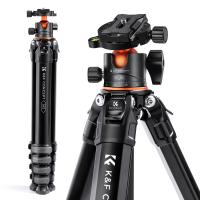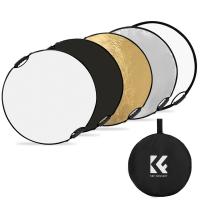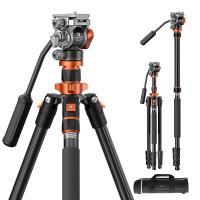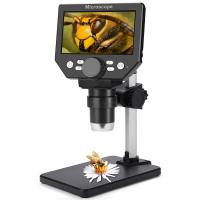Who Invented The First Light Microscope ?
The first light microscope was invented by Zacharias Janssen and his father Hans Janssen in the late 16th century.
1、 Hans Lippershey's Contribution to the Invention of the Light Microscope
Hans Lippershey is often credited with the invention of the first light microscope. Lippershey was a Dutch spectacle maker who is believed to have created the first working telescope in 1608. While his invention was primarily intended for astronomical observations, it laid the foundation for the development of the light microscope.
Lippershey's telescope consisted of a convex objective lens and a concave eyepiece lens, which allowed for magnification of distant objects. It is believed that shortly after his invention, scientists and researchers began experimenting with the device to observe smaller objects, leading to the birth of the light microscope.
However, it is important to note that the invention of the light microscope was not solely attributed to Lippershey. Other scientists, such as Zacharias Janssen and his father Hans Janssen, are also believed to have made significant contributions to the development of the microscope around the same time. The Janssens were spectacle makers as well and are said to have created a compound microscope with multiple lenses, which further improved magnification.
In recent years, there has been some debate and uncertainty regarding the exact inventor of the light microscope. Some historians argue that the invention was a collective effort, with multiple individuals making incremental advancements that eventually led to the creation of the microscope as we know it today.
While Lippershey's contribution to the invention of the light microscope is significant, it is important to acknowledge the collective efforts of various scientists and inventors during that period. The development of the light microscope was a gradual process, with each contribution building upon the previous ones to refine and improve the technology.

2、 Zacharias Janssen's Role in Developing the First Light Microscope
Zacharias Janssen's Role in Developing the First Light Microscope
Zacharias Janssen, a Dutch spectacle maker, is widely credited with inventing the first light microscope in the late 16th century. Alongside his father, Hans Janssen, they developed a device that consisted of a convex objective lens and a concave eyepiece lens, which allowed for magnification of small objects. This invention revolutionized the field of microscopy and laid the foundation for the scientific study of cells and microorganisms.
Janssen's microscope was a significant advancement in optical technology at the time. It enabled scientists to observe and study microscopic organisms and structures that were previously invisible to the naked eye. This breakthrough opened up new avenues of scientific exploration and greatly contributed to the development of various scientific disciplines, including biology and medicine.
However, it is important to note that the invention of the light microscope was a gradual process, and Janssen's role in its development is not without controversy. Some historians argue that Janssen's contribution was part of a collective effort, as several other inventors were also experimenting with similar devices during that period. Additionally, there are claims that the invention of the microscope predates Janssen, with some attributing it to Hans Lippershey or even Galileo Galilei.
While the exact details of who invented the first light microscope may be debated, it is undeniable that Janssen played a crucial role in its development. His invention marked a significant milestone in the history of microscopy and paved the way for countless scientific discoveries. Today, light microscopes have evolved into highly sophisticated instruments capable of magnifying objects up to a million times, allowing scientists to explore the intricate details of the microscopic world.

3、 The Controversy Surrounding the Invention of the Light Microscope
The controversy surrounding the invention of the light microscope is a topic that has intrigued historians and scientists for centuries. While there is no definitive answer, the general consensus is that the first light microscope was invented by two Dutch spectacle makers, Zacharias Janssen and his father Hans Janssen, in the late 16th century.
According to historical accounts, the Janssens developed a device consisting of a convex objective lens and a concave eyepiece lens, which allowed for magnification of small objects. This invention revolutionized the field of microscopy and paved the way for further advancements in scientific research.
However, some recent research has challenged this traditional narrative. In 1957, a historian named Brian J. Ford proposed an alternative theory, suggesting that the true inventor of the light microscope was a Dutch draper named Cornelis Drebbel. Ford argued that Drebbel's invention predated the Janssens' by several decades, based on his interpretation of historical documents.
Despite Ford's claims, the majority of historians and scientists still credit the Janssens with the invention of the light microscope. The Janssens' device was the first to be documented and widely recognized, and their contribution to the development of microscopy cannot be understated.
It is important to note that the controversy surrounding the invention of the light microscope is not merely an academic debate. The invention of this instrument had a profound impact on scientific discovery, enabling scientists to observe and study microscopic organisms and structures for the first time. The light microscope remains a fundamental tool in scientific research to this day, and its invention marks a significant milestone in the history of science.

4、 The Evolution of the Light Microscope after its Invention
The first light microscope, also known as an optical microscope, was invented by Dutch scientist Antonie van Leeuwenhoek in the late 16th century. Van Leeuwenhoek is often credited with being the first person to observe and describe microorganisms, which he referred to as "animalcules," using his handmade microscopes.
Van Leeuwenhoek's microscopes were simple but highly effective. They consisted of a single lens mounted on a metal plate, with a small sample holder positioned in front of the lens. By carefully grinding and polishing the lenses, van Leeuwenhoek was able to achieve magnifications of up to 300 times, far surpassing the capabilities of previous magnifying devices.
After van Leeuwenhoek's invention, the light microscope underwent significant advancements over the centuries. In the 17th century, Robert Hooke improved upon van Leeuwenhoek's design by introducing a compound microscope with multiple lenses, which allowed for higher magnification. This led to further discoveries in the field of microbiology.
In the 19th century, Ernst Abbe, a German physicist, developed the concept of numerical aperture, which improved the resolution and clarity of microscope images. This breakthrough paved the way for the development of modern microscopes.
Today, light microscopes have evolved into highly sophisticated instruments capable of magnifying objects up to 2000 times or more. They incorporate advanced technologies such as fluorescence microscopy, confocal microscopy, and electron microscopy, which have revolutionized various scientific fields.
It is important to note that while van Leeuwenhoek is often credited with inventing the first light microscope, there were other scientists and inventors who made significant contributions to the development of this technology. However, van Leeuwenhoek's pioneering work and his observations of microorganisms laid the foundation for the subsequent advancements in microscopy.




























